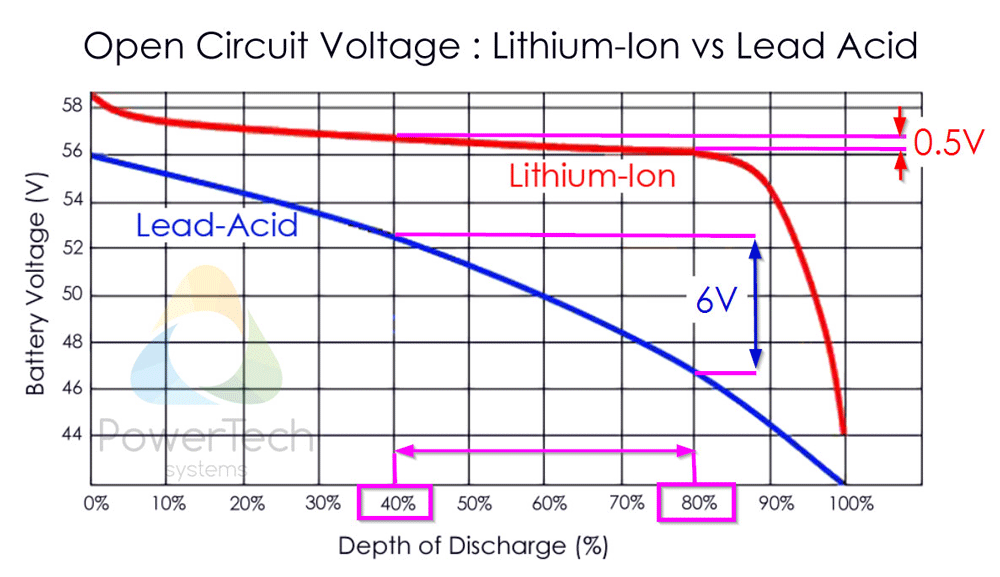I was just curious how this would work. 8s LiFePo4 and 7s Li-ion can operate as a single pack if you set proper BMS levels and keep your operation between the ditches. The only reason I can think of doing this would be to help with high surge current demands (100C Li-Ion for example) or in a pinch where neither pack was large enough for the duration of a specific discharge demand (keep the freezer on overnight.
Interesting to note that early on and late in the discharge, the Li-ion carried more of the load but in the middle where the LiFePo4 was in its flat voltage area, the LiFePo4 delivered more of the power. Overall the LiFePo4 delivered more of the total energy. However, I didn't allow the test to run until the Li-ion was near its cutoff of 3.3v or so. So it would have been closer to even if I had let it run longer.
See attached.
Interesting to note that early on and late in the discharge, the Li-ion carried more of the load but in the middle where the LiFePo4 was in its flat voltage area, the LiFePo4 delivered more of the power. Overall the LiFePo4 delivered more of the total energy. However, I didn't allow the test to run until the Li-ion was near its cutoff of 3.3v or so. So it would have been closer to even if I had let it run longer.
See attached.



